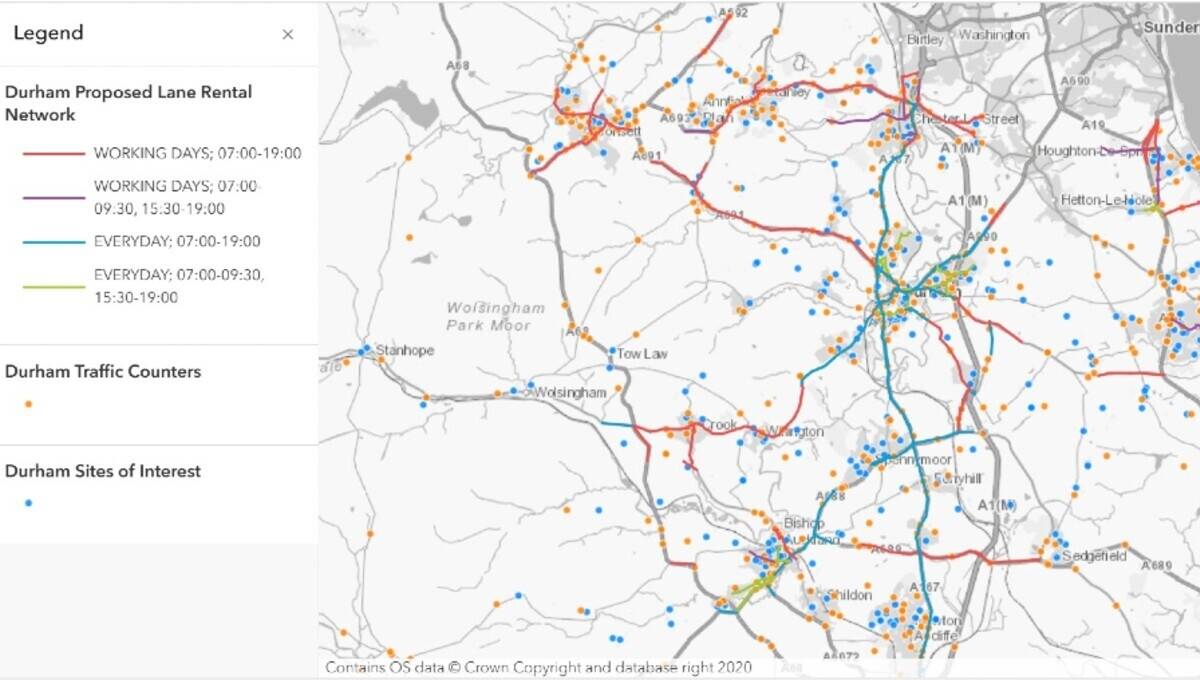Read the full article below - 12 April 2010
Burisa 183
"Question: Is there "The" National Address Register? Answer: Yes - the National Land and Property Gazetteer (NLPG)" - Tony Black, Intelligent Addressing
Abstract
Tony Black's letter in edition 182 of Burisa was in response to an article in edition 181 about the address list to be used for the 2011 Census. This is a very important initiative with wide ranging national implications.
It is imperative that it is undertaken on a sound basis; hence the need for an address list which is 99% complete according to ONS's specification. There have been suggestions that the resulting list could be taken forward as the National Address Register.
However, addresses underpin hundreds, if not thousands, of other applications, many of which require the addresses to be 100% complete and on a daily basis. These range from over a hundred applications in local authorities, to the emergency services, utilities, transport companies, delivery firms.
Therefore The National Address Register is arguably the most important dataset in the country, though the other two key datasets would be of people (not to be confused with identity cards!) and organisations. One of the ironies about the arguments around the NLPG being "The" definitive dataset for England and Wales over the past 10 years is that the "sister" projects in Northern Ireland (Pointer) and Scotland (One Scotland Gazetteer) are accepted as being The solution in those countries.
Why isn't the NLPG recognised in the same way and used widely?
So what's special about the NLPG which results in it being the definitive list of addresses?
Firstly it recognises that there needs to be one application-independent master list that can be used by many, if not all, address based applications - the whole is greater than the sum of the parts. This will save organisations considerable amounts of money in both direct and indirect costs in trying to maintain their addresses independently.
Then there's the Information Principle that if it's going to be a task done once it must have access to the source of the information. Local authorities are the responsible bodies for naming streets and numbering properties. The following diagram resulted from the Acacia Project a few years ago (Local government; OS; RM; Valuation Office Agency; HMLand Registry) and it tracks the address lifecycle. The only two bodies involved are the authorities for addresses and RM to add postcodes to the subset to which they deliver mail.
The next benefit is that as all 348 authorities have Local Land and Property Gazetteers (LLPG) they have been brought together at the NLPG hub, run by Intelligent Addressing Ltd under contract to local government. Both the national dataset and subsets of it and the updates can therefore be accessed from one source with one set of conditions.
Compiling the NLPG has involved matching a range of application datasets. The addresses in them are formatted in different ways and have variations. The unmatched records have to be resolved and again the Acacia project showed that this was best undertaken by local authority staff. Resolving the mismatches results in more addresses being added to the NLPG, because, for example, some properties of importance to the Electoral Registers don't have to be in the Council Tax list. Conversely matching application lists to the NLPG has resulted in more addresses being added to the application lists, which therefore leads to the better provision of services.
At present, a lot of duplicative address matching is taking place and another facility of the NLPG is that the task only needs to be done once, to the NLPG. For example, the current match rate of the Council Tax list to the NLPG is 99.3% and the remaining few hundred thousand unmatched records are being investigated by the LLPG Custodians. Having resolved the mismatched addresses the variations are all stored in the NLPG so that in future there will be higher success rates of automatic matching when further address based lists need to be linked.
The requirement, foreseen several decades ago, was that information should be capable of being shared between different applications and organisations. Addresses are inefficient ways of linking data so the concept that BS7666, and the NLPG as its implementation, has adopted is the use of Unique Property Reference Numbers (UPRN).
So instead of each application or organisation having to repeatedly match data against other datasets to form the links, the NLPG principle is "match once; share many", because having matched to the NLPG it means that data can be shared with any other dataset that has also been matched and has the relevant UPRNs. A schematic of the flows of information is at the bottom of p18. (slide showing the departments/LLPG/NLPG/other organisations links).
Keeping the address data up-to-date requires a rigorous process supported by Information Management principles. It is a very different task to producing maps/map data. There the task is to record changes after they have taken place and publish them months and in many cases, years, afterwards.
Keeping address data current is a continuous process tracking the changes as they take place through the lifecycle. Currency is crucial. (slide "updates: the lifecycle" - from the 2004 Acacia project).
At the beginning of this article, I pointed out the irony that the sister projects in Northern Ireland and Scotland are accepted as the definitive solutions.
Interestingly the former is a result of partnership working between a number of organisations. The latter had its origins in the NLPG and was then recognised as being a key building block to support many of the One Scotland initiatives and has been taken forward as a Scottish central/local government project.
It is therefore illogical and inconsistent that the NLPG isn't widely accepted in the same way in England and Wales. For example, Royal Mail states that its source of addresses is local government, so the NLPG provides an opportunity for them to have access to daily changes, in a consistent format, from a single source. Others have said that high-quality local LPGs are the definitive solution locally â the logical follow-up action should have been to support local government in ensuring that all 348 authorities worked to the same high standards.
This has never been forthcoming in the same way as in Northern Ireland or Scotland, despite a cross-government Working Group, chaired by the Cabinet Office, coming to this conclusion in 2004. Instead it was left to local government to take its initiative forward.
It did this in a groundbreaking and radical way in 2005 when, through the Mapping Services Agreement (MSA), it contracted with itself to deliver nationally consistent data, sourced from the authorities, via the NLPG.
Since then the authorities have migrated to the new version of BS7666: 2006 and are continuously improving various aspects of the gazetteer. The majority of them have very high quality LLPGs in terms of a range of quality measures and the remainder, having achieved the minimum standard, are being chivvied along to join them.
As has been said many times, the NLPG is not a product but a process and one that is resulting in ever higher data quality, primarily because it is supporting an ever longer list of services, which means that it has to be updated frequently.
The hub is now receiving over 3,700 update files a month from the 348 authorities, with the majority being sent either weekly or daily - some urban authorities send multiple files per day, reflecting the rate of change. It isn't perfect and arguably it never can or will be but according to our investigations, it is the best available and will only improve further.
So, if you need a high quality address list to support your work, then evaluate the NLPG!
That leaves the complicated and controversial issue of accessing the data!
If you work in the local government community then access to the NLPG is relatively straightforward under the MSA. The NLPG is a local government database and they own the IPR in it - therefore all local government organisations are licensed to use it. However, it includes Postcode Address File (PAF) data and some OS coordinates, incorporated as a result of a decision to "reuse public sector information".
The licences to use the NLPG, therefore, incorporate terms from both RM and OS, as it is an AddressPoint (AP) value added product. The terms are lengthy (which OS may have "addressed" by April this year), and complex, and restrictive, and arguably confusing, particularly around derived data. In addition, there is the issue of stacked pricing. This is because the full PAF price has to be included, even though only the Posttown and Postcode are included (and arguably they aren't sourced directly from PAF).
Similarly, the AddressPoint price has to be included, even though only coordinates have been included. This was the consequence of an exercise at the outset of the project, when the NLPG was first compiled in the early noughties resulting in around 70-80% of the NLPG having map coordinates derived from AP.
Since then the percentage has dropped significantly as the authorities add their own coordinates for new addresses and many of them have improved the coordinates incorporated from AP.
The price of the NLPG is therefore relatively expensive and the pricing structure is complex, with a range of licensing options related to different types of application.
Despite these obstacles, the NLPG remains extremely good value for money for many applications, which is why a wide range of organisations are evaluating it with a view to migrating their systems to be based on it â it is, however, a shame that the pricing structure isn't extremely good value for all applications.
This is what local government wants to achieve and which is why both local government and Intelligent Addressing have been lobbying for changes to the pricing structures for government datasets in general, and OS ones in particular, for many years.
"Maximising the use of geographic information" is the mission for the Association for Geographic Information and it ought to be for all the organisations which are the source of definitive data, and central government in particular but we're still a long way away from realising the objective.
This is why the "Making public data public" initiative being led by Sir Berners-Lee is so important and has proposed that a range of OS datasets be made available free.
The result of all the hard work, investment and perseverance of the local government community is the NLPG as the definitive address list. It will be increasingly recognised as a key achievement as it becomes embedded not just in the majority of local government's workings but in the organisations that provide so many services to citizens on a daily basis.



